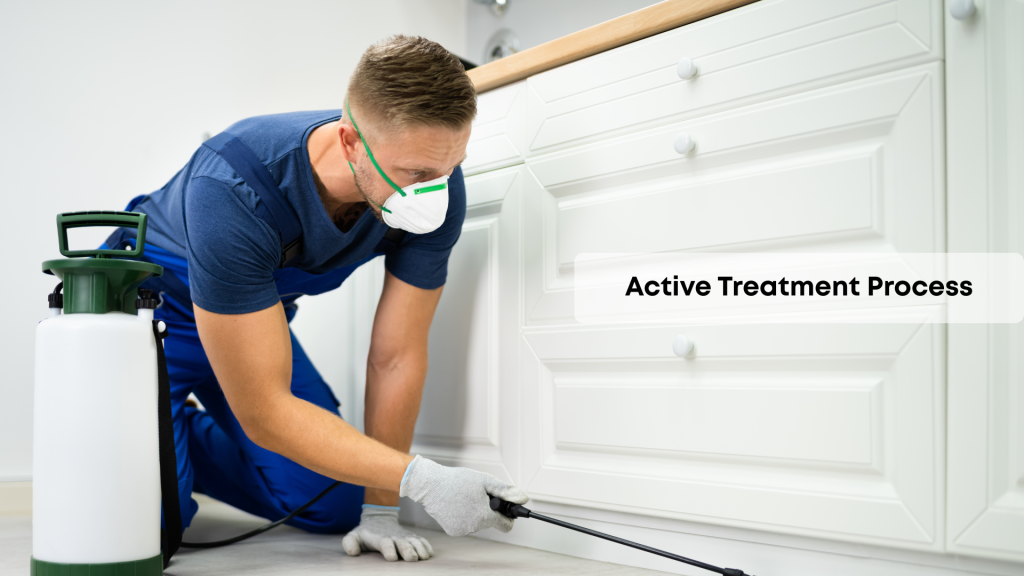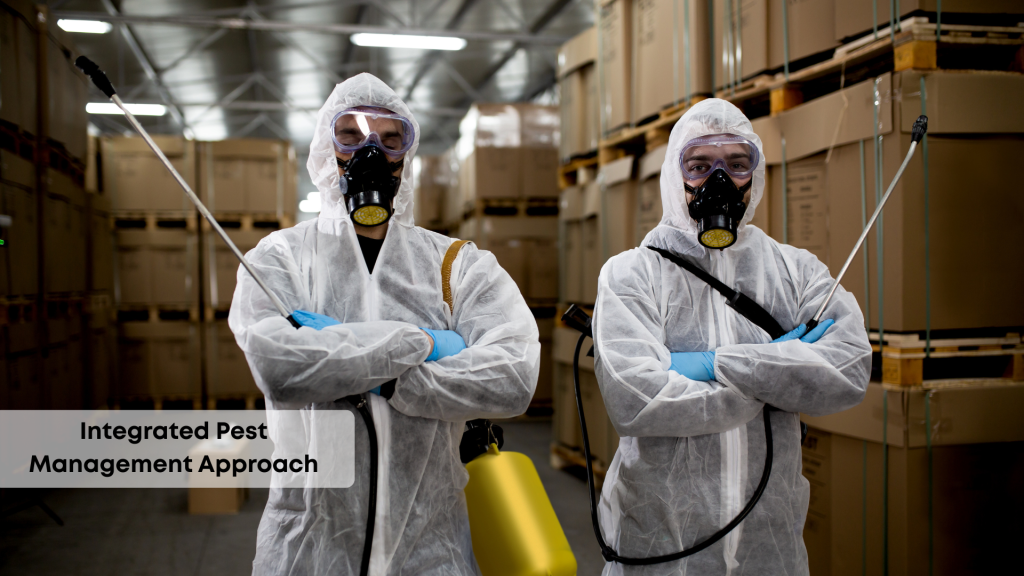The gentle hum outside your window suddenly becomes a cause for concern when you spot dozens of worker bees investigating your property’s eaves. While these essential pollinating bees contribute significantly to our ecosystem through pollination and honey production, an unwelcome bee infestation near your home requires immediate professional attention. Understanding what happens during a professional bee pest control service helps you prepare for a smooth, efficient experience.
1Initial Assessment and Inspection
When pest control technicians arrive at your residential or commercial property, their first priority involves conducting a comprehensive inspection of the affected area. Professional exterminators in Canada understand that different species require distinct approaches – distinguishing between honey bees, wasps, and hornets is crucial for determining the appropriate treatment strategy.
What Technicians Look For:
- Location and size of bee nests, hives, or wasp nests
- Evidence of bee colonies including wax comb structures
- Flight patterns of worker bee activity and bee swarms
- Proximity to bee-friendly plants like daisies and zinnias
- Access points where bees enter structures
- Presence of queen bee, drones, and colony organization
During this phase, technicians coordinate with local beekeepers and the apiary society when dealing with valuable honeybee populations. In many cases throughout the Greater Toronto Area, Calgary, Winnipeg, Halifax, Saint John, and Montréal, professional services prioritize eco-friendly solutions and bee relocation rather than immediate extermination.
2Safety Preparation and Equipment Setup

Professional pest-control teams arrive equipped with comprehensive safety gear and professional gear designed to protect both technicians and property occupants. This preparation phase ensures everyone’s safety while maintaining the integrity of your residential or commercial space.
Technicians establish physical protection zones around the treatment area, particularly important when dealing with aggressive stinging insects like bald-faced hornets or yellow jacket nests. The team coordinates with beekeeping enthusiasts and follows guidelines from the Canadian Pest Management Association and Ontario Ministry regulations.
Service Coverage: Our technicians serve Toronto & GTA, Ontario, Manitoba, Nova Scotia, Québec, New Brunswick, Newfoundland, Prince Edward Island, and St. John’s.
3Treatment Method Selection
Modern pest control prioritizes eco-friendly methods and sustainable solutions whenever possible. Professional services evaluate multiple approaches before proceeding with treatment, considering both environmental impact and long-term effectiveness.
Relocation Services
For beneficial honey bee populations, many companies coordinate with the honeybee association and bee keeper networks to arrange safe bee hive removal and relocation to appropriate starter hives. This approach supports sustainable practices while addressing your immediate pest concerns.
Treatment Options Available:
- Eco-friendly steam treatments and heat treatments for nest removal
- Natural repellents and non-chemical methods for minor infestations
- Environmentally-friendly insecticides when necessary
- Traps and containment systems for wasp removal
- Insecticidal dust and residual spray applications
- State-of-the-art techniques including K-9-assisted inspections
4Active Treatment Process
The actual treatment phase varies significantly depending on the situation. For hornet nest removal or aggressive wasp nest removal, technicians may utilize specialized aerosols and protective chemical control measures. However, many modern approaches emphasize environmental responsibility.

When dealing with established beehives, professional teams often coordinate with wildlife rescue services to ensure proper bee relocation. This process involves carefully removing the queen bee, worker bees, and male drones while preserving the colony structure for transfer to appropriate beekeeping facilities.
Important Note: Unlike competitors such as Terminix, BP Pest Control, Prime Pest Control, Addison Pest Control, or Rentokil, many Canadian services prioritize collaboration with the ministry of environment Ontario to ensure compliance with provincial wildlife protection standards.
5Post-Treatment Monitoring and Prevention
Following initial treatment, professional services typically schedule follow-up visits to monitor seasonal activity and prevent re-infestation. This phase often involves educational components about maintaining bee-friendly environments while preventing unwanted swarm activity near structures.
Technicians may recommend strategic placement of bee-friendly plants at appropriate distances from buildings, supporting local pollination while directing bee activity away from high-traffic areas. They also provide guidance on recognizing early signs of hornet or wasp activity during peak seasons.
Why Choose Top Choice Pest Control?
Top Choice Pest Control stands apart from other pest control providers through our commitment to eco-friendly removal techniques and comprehensive insect control measures. Our certified technicians maintain memberships with the Structural Pest Management Association and National Pest Management Association, ensuring industry-leading expertise.
- HomeStars Award recognition for outstanding customer service
- QualityPro Food Safety certification for commercial applications
- Specialized training in bee removal service and hornet removal
- Coordination with local beekeeping networks and apiary society partnerships
- Comprehensive coverage including rodent control, Bedbugs, Mice, and Cockroaches
- Access to PestNetOnline login for service tracking and updates
Our approach extends beyond simple extermination – we provide sustainable solutions that protect both your property and Canada’s essential pollinating populations. From routine mouse trap installations to complex bee swarm management, our team delivers results while maintaining environmental responsibility.
Understanding Different Species and Seasonal Patterns
Canada hosts numerous stinging insects that require different management approaches. Professional pest control technicians distinguish between beneficial honeybees, aggressive wasps, and territorial hornets to determine appropriate intervention strategies.
Common Species in Canadian Regions:
- Honey bees – Essential pollinators that collect nectar and pollen for honey production
- Bald-faced hornets – Aggressive species that build large paper nests in trees
- Yellow jackets – Ground-nesting wasps that become aggressive near food sources
- Paper wasps – Build umbrella-shaped nests under eaves and overhangs
- Carpenter bees – Solitary bees that bore holes in wooden structures
Seasonal activity patterns significantly impact treatment timing. Spring emergence sees queen bees establishing new colonies, while late summer brings peak population levels and increased aggression around food sources. Understanding these cycles helps technicians recommend optimal intervention timing.
Preparing Your Property for Professional Service
Proper preparation enhances service effectiveness and ensures safety for all involved. Property owners can take several steps before technicians arrive to facilitate smooth bee removal or wasp nest removal operations.
Pre-Service Preparation Checklist:
- Clear access paths to affected areas
- Remove outdoor food sources and sugary drinks
- Secure pets indoors during treatment
- Document recent swarm activity or unusual behavior
- Note times of peak bee or wasp activity
- Identify any known allergies among household members
Professional services often coordinate with wildlife rescue services when dealing with protected species or environmentally sensitive locations. This collaboration ensures compliance with provincial regulations while addressing immediate safety concerns.
DIY Approaches vs Professional Services
While hardware stores offer various traps, aerosols, and insecticides for bee control, attempting DIY nest removal often proves dangerous and ineffective. Bee swarms can contain thousands of individuals, and disturbing established colonies without proper safety gear risks serious injury.
Professional exterminators bring specialized equipment including protective suits, long-range treatment products, and emergency protocols. They also maintain current trapping licenses and understand regulatory requirements for handling different species across Canadian provinces.
Risks of DIY Approaches:
- Incomplete nest removal leading to re-establishment
- Aggressive defensive responses from disturbed colonies
- Improper use of chemical treatments and insecticides
- Potential violations of wildlife protection regulations
- Lack of proper disposal methods for wax comb and debris
Cost Factors and Service Investment
Professional bee removal service costs vary based on several factors including colony size, nest accessibility, species type, and required treatment methods. Simple wasp nest removal typically costs less than complex bee hive removal requiring coordination with local beekeepers.
Many companies offer transparent pricing that includes initial inspection, treatment application, and follow-up monitoring. Services throughout the Greater Toronto Area, Calgary, Winnipeg, and other major Canadian cities often provide detailed estimates before beginning work.
Factors Affecting Service Costs: Location accessibility, colony size, species identification, required safety measures, disposal requirements, and follow-up needs all influence final pricing for bee control services.
Environmental Considerations and Sustainable Practices
Modern pest control emphasizes environmental stewardship and sustainable solutions. Many Canadian provinces have implemented strict guidelines governing bee and pollinator protection, recognizing their crucial role in agricultural ecosystems and food production.
Professional services work closely with the ministry of environment Ontario and other provincial authorities to ensure treatments comply with environmental protection standards. This includes minimizing impact on beneficial pollinating bees while effectively managing problematic infestations.
Eco-Friendly Treatment Options:
- Heat treatments that eliminate colonies without chemical residues
- Steam treatments for surface nest removal
- Natural repellents derived from plant-based compounds
- Physical relocation to suitable beekeeping facilities
- Habitat modification to discourage re-establishment
Integration with Comprehensive Pest Management
Professional pest control companies often provide integrated services addressing multiple concerns including Bedbugs, Cockroaches, Mice, and rodent control. This comprehensive approach ensures your property receives thorough protection against various pest threats.
Many services utilize advanced tracking systems accessible through PestNetOnline login portals, allowing customers to monitor treatment progress and schedule follow-up appointments. This technology integration enhances service delivery and customer satisfaction across all pest management categories.
Integrated Pest Management Approach

Modern pest-control professional services recognize that effective bee infestation management requires understanding the broader ecosystem. Our technicians evaluate factors including nearby nectar sources, pollen grains availability, and seasonal bee behaviors when developing treatment strategies.
This comprehensive approach often involves minimal use of chemical pesticides and poison, instead emphasizing natural deterrents and habitat modification. When insecticide application becomes necessary, our team utilizes environmentally-friendly formulations approved by Canadian regulatory authorities.
For property owners interested in supporting local beekeeping while maintaining safe premises, our technicians can recommend appropriate placement of starter hives and provide referrals to qualified bee keeper networks throughout your region. This balanced approach supports both immediate safety needs and long-term environmental sustainability.
Conclusion
Professional bee pest control services provide essential expertise for safely managing unwanted bee colonies while preserving beneficial populations. Through careful inspection, appropriate treatment selection, and ongoing monitoring, certified technicians ensure your property remains protected while supporting environmental sustainability. Choosing experienced professionals ensures both immediate problem resolution and long-term prevention strategies tailored to your specific situation and regional requirements.